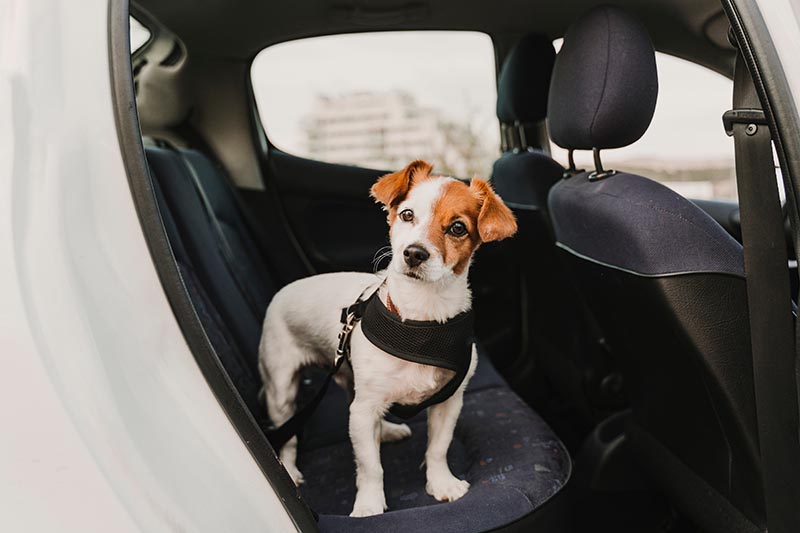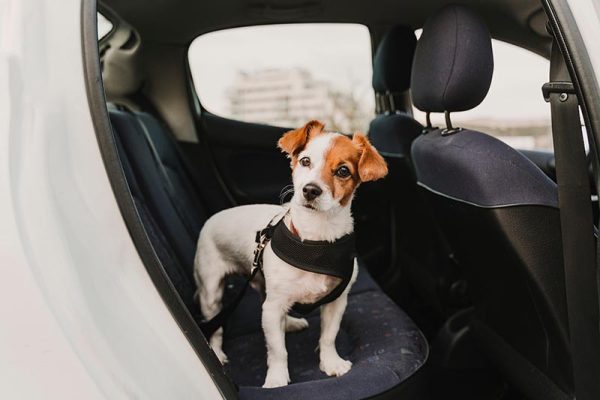Traveling with your puppy can be a great experience—and a way to show off your new pet to your friends and relatives. However, it’s important to do it safely because puppies aren’t as sturdy as adult dogs and require special care. Keep reading as we list several essential tips and tricks to help you travel safely with a puppy in your car.
The 11 Tips to Travel With a Puppy in a Car
1. Invest in a Quality Crate or Carrier
Purchasing a good puppy crate designed for use in the car is one of the best ways to keep your pet safe while traveling. It prevents the dog from wandering around the car while you drive, which can be distracting and lead to accidents or injury. Choose a crate that isn’t too large but enables your dog to stand up and turn around comfortably. It should also have plenty of ventilation and enable your dog to see what’s happening around them. You can also use a leash or harness, but these aren’t as secure as a crate.
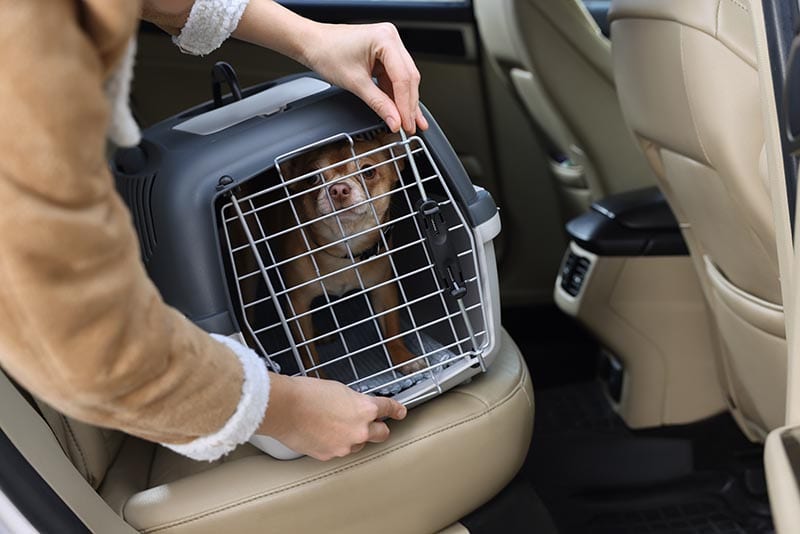
2. Secure the Crate or Carrier
Once you choose your puppy crate, you must secure it in the car’s back seat. Follow the instructions in the manual to ensure that you install it properly, so it doesn’t slide or tip if you suddenly stop or turn.
3. Bring Along Familiar Items
Your new puppy might be scared the first few times that you take them for a ride, so bring along plenty of familiar items, like toys, blankets, and clothing. These items will smell like home, which can help your dog feel more comfortable. The toys can also give your pet something to do on a long trip so they don’t get bored and start acting up.

4. Don’t Feed Your Puppy Right Before the Car Ride
Avoid feeding your dog right before your trip to help prevent them from needing to use the bathroom. Dogs can also get sick if they eat right before a car ride, leading to diarrhea, vomiting, drooling, and other problems. Try to wait at least 2 hours after a previous meal so the food can digest a bit before taking your puppy for a ride.
5. Take Frequent Breaks
Even if you don’t feed your puppy, you will find that they still need bathroom breaks while on a car ride. They will also need to stretch their legs, or they can start to misbehave. Taking frequent breaks at rest areas or small parks will help your puppy relieve themselves, burn off excess energy, and give you a chance to provide them with water to keep them hydrated. Always remember to bring doggy poop bags with you so you can clean up after your pet.

6. Keep the Windows Rolled Up
If you are using a harness instead of a crate, keep the windows rolled up so the puppy doesn’t try to stick their head outside, which has a high risk of injury due to their small body. If it’s extra hot in the car, leave the windows open only 1–2 inches to keep the dog’s head inside.
7. Watch for Motion Sickness
Puppies, like children, are more susceptible to motion sickness, likely due to still-developing inner ears, so keep a close eye on your pet as you drive. Look for signs like whining, drooling more than usual, restlessness, lip licking, and vomiting. If any of these things occur, stop the trip, and keep future trips short until the dog gets older.
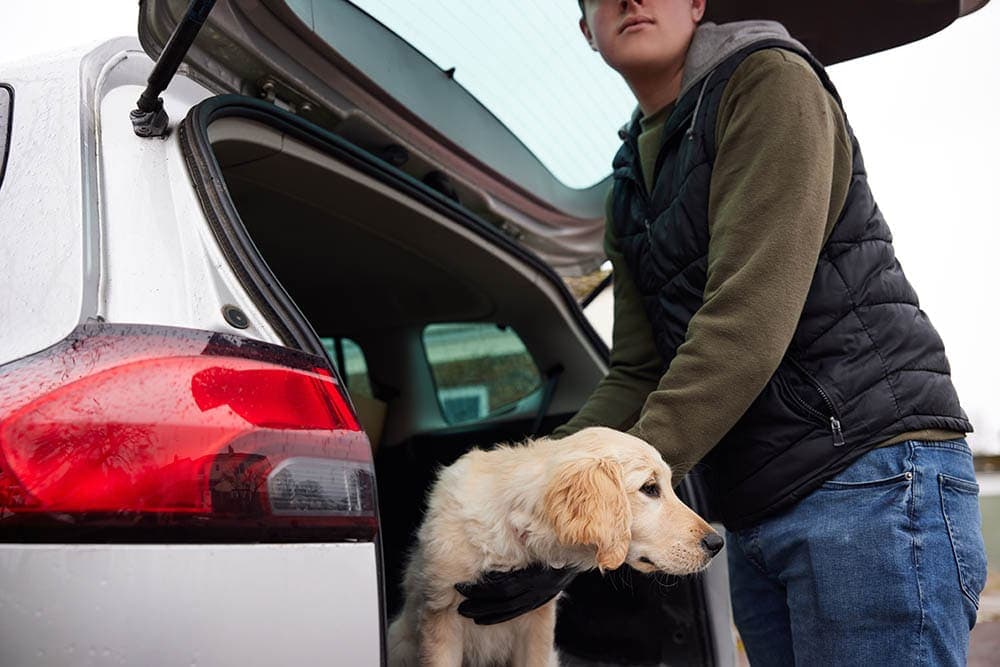
8. Take a Friend With You
Since watching your puppy while you drive can be hard, taking a friend with you can be helpful, especially if they are also friendly with your pet. Doing so can help alert you to problems like motion sickness sooner and can also help the puppy feel more comfortable because they will be getting extra attention. The friend can also hold the crate or leash to help keep the puppy more stable during the trip.
9. Take Your Pet for Frequent Rides
Taking your pet for frequent rides can help them get used to it, and they will develop an in-car routine that will enable them to be more comfortable so you can take longer trips. Many dogs will even grow to enjoy riding in the car. Doing this also helps prevent them from panicking when they must ride in the car, like when they need to go to the vet.
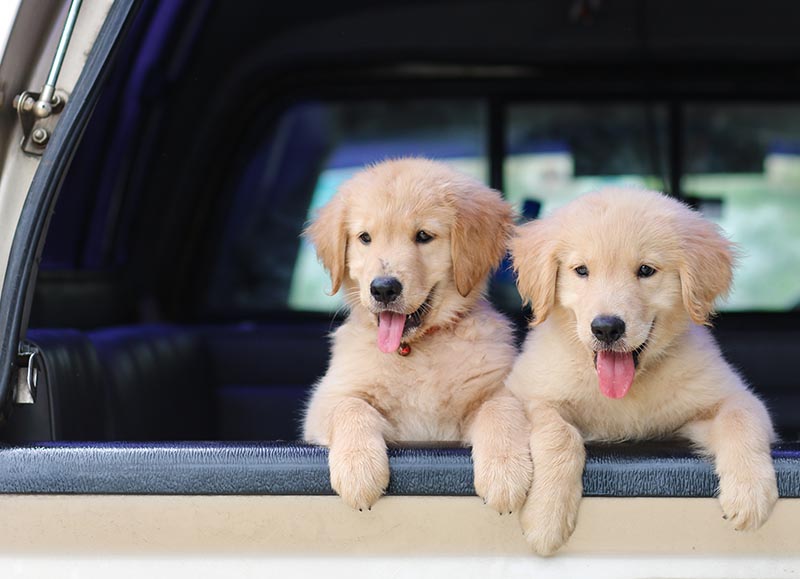
10. Never Leave Your Puppy Alone in the Car
The inside of a vehicle can get quite hot if you park in a parking lot or other location, especially with the windows up, so it’s not safe to leave your puppy in the car while you run errands. Doing so can lead to heat stroke or even death. Even on a mild day, the inside of a car can get very hot and stuffy. Never leave the dog in the car alone for more than a few minutes, and when you do, park in the shade and leave the window open slightly.
11. Use Identification Tags
You will need to make frequent stops with your pet as you travel, and there is always a risk that you might get separated. Getting the dog microchipped and ensuring that they are wearing identification tags can reduce the risk of them getting lost.
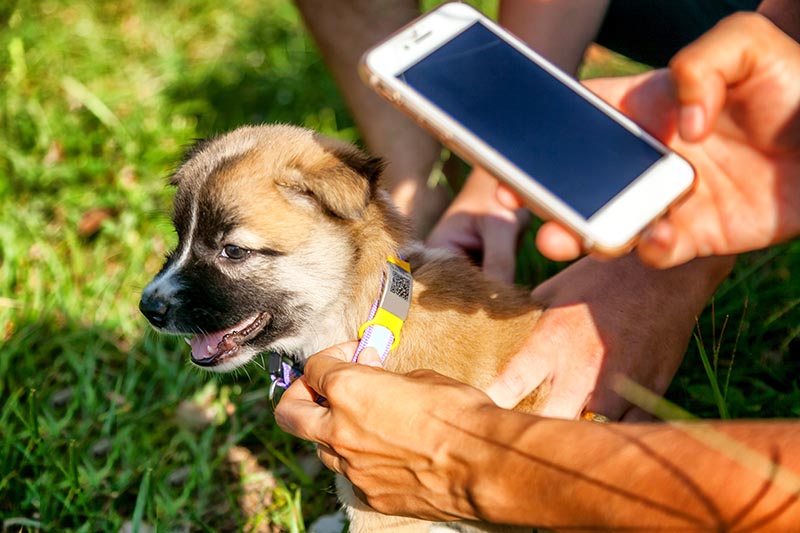
Final Thoughts
Traveling with your puppy is not difficult and only requires you to take a few steps to ensure that the dog is safe. A quality crate or carrier is the best way to protect your pet. It can be fastened securely with seat belts, so it won’t tip or rock when you drive. Many have additional padding and will also protect your car seats from accidents. Take along plenty of familiar items and toys, and start with short trips to help your puppy get used to the movement and develop an in-car routine. Extend your adventures as the dog gets used to the car, and go out frequently so they look forward to it.
Featured Image Credit: eva_blanco, Shutterstock
Contents
- The 11 Tips to Travel With a Puppy in a Car
- 1. Invest in a Quality Crate or Carrier
- 2. Secure the Crate or Carrier
- 3. Bring Along Familiar Items
- 4. Don’t Feed Your Puppy Right Before the Car Ride
- 5. Take Frequent Breaks
- 6. Keep the Windows Rolled Up
- 7. Watch for Motion Sickness
- 8. Take a Friend With You
- 9. Take Your Pet for Frequent Rides
- 10. Never Leave Your Puppy Alone in the Car
- 11. Use Identification Tags
- Final Thoughts

